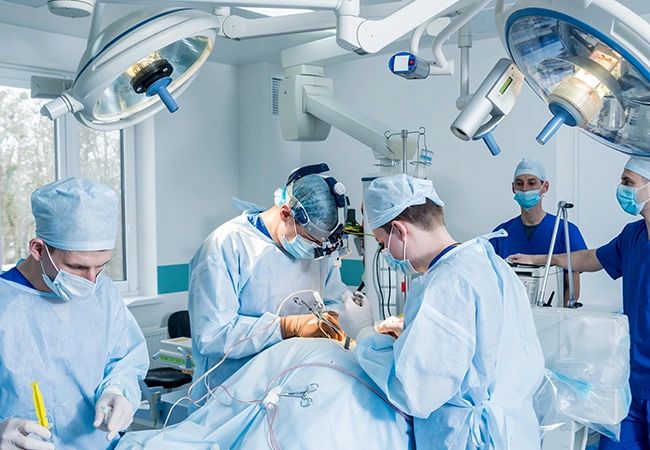
🏥 Operation Theatre and Anesthesia Technology (OT & AT): The Backbone of Modern Surgery
When we think of surgery, we often picture the surgeon — scalpel in hand, performing life-saving procedures. But behind every successful operation stands a team of highly skilled professionals and sophisticated systems that ensure precision, safety, and comfort. Among these, Operation Theatre (OT) and Anesthesia Technology (AT) play an indispensable role.
In this blog, we’ll explore what OT & AT is all about, the responsibilities of professionals in this field, and how this discipline supports modern medical care.
🔬 What is Operation Theatre and Anesthesia Technology?
Operation Theatre & Anesthesia Technology (OT & AT) is a specialized branch of healthcare science that focuses on assisting in surgical procedures, maintaining surgical instruments, preparing the operation theatre environment, and supporting anesthesiologists during operations.
Professionals trained in OT & AT are often called Operation Theatre Technologists or Anesthesia Technicians. They are an integral part of the surgical team, ensuring that every operation runs smoothly and safely.
⚙️ Key Responsibilities
🩺 1. Preparing the Operation Theatre
Before any surgery, the OT technologist ensures that the operation theatre is sterile, equipment is functioning properly, and all necessary instruments are available. They assist in arranging surgical tools, lights, and tables according to the type of surgery being performed.
💉 2. Assisting During Surgery
During surgery, technologists assist surgeons and nurses by handling instruments, maintaining aseptic conditions, and ensuring the patient’s vital signs are monitored.
😷 3. Supporting Anesthesia Procedures
Anesthesia technologists work closely with anesthesiologists to prepare and administer anesthesia. They monitor the patient’s vital parameters such as heart rate, oxygen levels, and blood pressure, ensuring the patient remains stable throughout the procedure.
🧽 4. Post-operative Care & Maintenance
After the surgery, OT technologists clean and sterilize instruments, manage waste disposal safely, and prepare the theatre for the next procedure.
🧠 Skills Required
-
Strong understanding of human anatomy and physiology
-
Knowledge of sterilization and infection control protocols
-
Technical expertise in medical equipment handling
-
Ability to stay calm under pressure
-
Teamwork and communication skills
🎓 Educational Pathway
Students interested in this field can pursue:
-
Diploma in Operation Theatre & Anesthesia Technology (2–3 years)
-
B.Sc. in Operation Theatre & Anesthesia Technology (3–4 years)
-
Postgraduate specializations or certifications in anesthesia management, surgical assistance, or critical care
Many hospitals and healthcare institutions also offer hands-on internship training, which provides real-world exposure to the surgical environment.
💼 Career Opportunities
Graduates in OT & AT can work in:
-
Government and private hospitals
-
Surgical centers
-
Emergency and trauma units
-
Maternity and pediatric hospitals
-
Medical colleges and research institutions
Job roles may include:
-
Operation Theatre Technologist
-
Anesthesia Assistant
-
Surgical Technician
-
OT Supervisor
-
Clinical Instructor
🌟 The Unsung Heroes of Surgery
While surgeons and physicians often take center stage, Operation Theatre and Anesthesia Technologists are the silent heroes ensuring every procedure is safe, efficient, and successful. Their blend of technical expertise, precision, and compassion makes them vital contributors to healthcare.
As medical technology continues to advance, the demand for skilled OT & AT professionals is steadily increasing — making it one of the most promising allied health careers today.
✨ Final Thoughts
Operation Theatre and Anesthesia Technology is not just a career — it’s a calling to serve humanity through science and care. Whether you’re assisting in a life-saving surgery or ensuring a patient’s comfort under anesthesia, your contribution makes a lasting difference in the world of healthcare.
Interested in a career in OT & AT?
Start by enrolling in a recognized diploma or degree program and take your first step toward a dynamic, respected, and rewarding healthcare profession.
